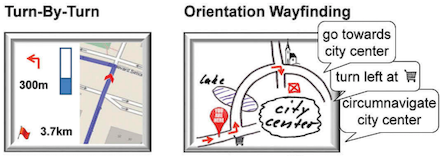Jakub Krukar

Junior Professor in Spatial Cognition
Institute for Geoinformatics,
University of Muenster, Germany
krukar(at)uni-muenster.de
[all publications]
[Google Scholar]
[ORCID]
[OSF]
Biosketch
This website is no longer updated. Please head to my lab’s website: SPARC
I am a Junior Professor in Spatial Cognition - a branch of cognitive science studying how people think about, think in, and think with space.
My background and approach are interdisciplinary, with an MA in psychology, a PhD from a department of architecture, and postdoctoral experience in geoinformatics. Methods I work with include virtual reality, mobile eye-tracking, spatial computation, Bayesian statistics, and architectural theory of Space Syntax.
I am based at the Institute for Geoinformatics in Münster, Germany where I’m currently setting up Spatial and Architectural Cognition Lab. I am also a Visiting Fellow at Future Cities Lab Singapore. Prior to that I did my PhD with Prof. Ruth Dalton at Northumbria University in Newcastle, UK.
Architectural Cognition
I am interested in how psychology can aid architecture in improving the usability of buildings. I study how space guides our behaviour, our attention, and our thinking. I design formal measures for architectural computation that are grounded in the cognitive experience of space.

In recent work, we have extended a popular architectural measure of visibility, called an “isovist”, from 2-D to 3-D environments. We demonstrated that our measure better predicts how “spacious” and “complex” a building feels to a human occupant, compared to the previously available methods.
Key publications:
3D Sketch Maps
As architectural researchers we want to study how people understand buildings. One good method for this are sketch maps - informal drawings that you might draw on a napkin to explain a friend how to get from A to B. However, drawing more complex buildings is difficult without professional training. Virtual Reality gave us tools to draw “in the air”, in 3D. Together with partners from ETH Zürich, we study how 3D drawing can be used by untrained people to express their knowledge of complex buildings.

Key publication:
Spatial Layouts of Art Galleries
Art galleries are a very unique type of space: white, empty walls and the art itself are almost the only visual stimuli around. In such a situation, their spatial layout (the spatial arrangement of artworks and rooms) is what really steers the visitors’ attention.

In my PhD I demonstrated that the layout of space can have a larger impact on visitor’s attention than the differences between individual artworks. I also showed that although the layout can change the strategy with which visitors attend to artworks, cumulative time spent on attending to each picture is unaffected by its location. Methodologically, the project combined Mobile Eye-Tracking with the architectural theory of Space Syntax.
Key publications:
Wayfinding Through Orientation
Traditional wayfinding devices use turn-by-turn instructions such as ‘turn left’ or ‘continue for 300 m’. These are easy to follow but leave us disoriented. They don’t correspond to how we would describe any route to other people. Can different types of navigation instructions help us learn the environment while we navigate?

We designed a new type of navigation instructions and demonstrated that they improve what people learn about the broader enviornment (e.g., the entire city), without sacrificing their understanding of the current route.
Key publications: